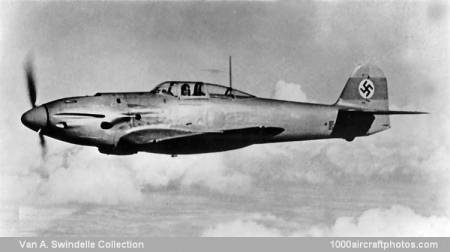The Japanese Imperial Navy placed an order for 30 He 112 B fighters essentially similar to the V9, the first 12 being shipped as He 112 B-0s in the late spring of 1938 and entering service as A7He 1 Type He Air Defense Fighters. The second batch of 12 was requisitioned by the Luftwaffe immediately prior to the Sudeten coup, and by the time these were restored to Heinkel, Japan had cancelled the remaining 18 fighters on the contract.
One of these was retained by Heinkel (to become the He 112 V11) and the remaining 17 were sold to the Spanish Nationalists. A second batch of 30 had meanwhile been laid down against an order from Romania placed at the beginning of 1939, the first 13 as He 112 B-0s with the Jumo 210Ea engine and the remainder as He 112 B-1s with the fuel injected Jumo 210G. Three He 112 B-1s were supplied to Hungary for evaluation, that country also purchasing the He 112 V9.
Two further prototypes were built, the He 112 V10 with the 1,175 hp DB 601Aa engine and the V12 with the 1,000 hp DB 600Aa, the latter eventually being sold to Japan. All production examples had an armament of two 0.311 in (7.9 mm) and two 0.787 in (20 mm) machine guns. The following data relate to the He 112 B-0.
Span: 29 ft 10.25 in (9.10 m)
Length: 30 ft 6 in (9.30 m)
Height: 12 ft 7.5 in (3.85 m)
Wing area: 182.99 sq.ft (17.00 sq.m)
Weight empty: 3,571 lb (1,620 kg)
Loaded weight: 4,960 lb (2,250 kg)
Max speed: 317 mph (510 kmh) at 15,420 ft (4,700 m)
Climb: to 6,562 ft (2,000 m) 2 min 36 sec
Range: 683 mls (1,100 km)
